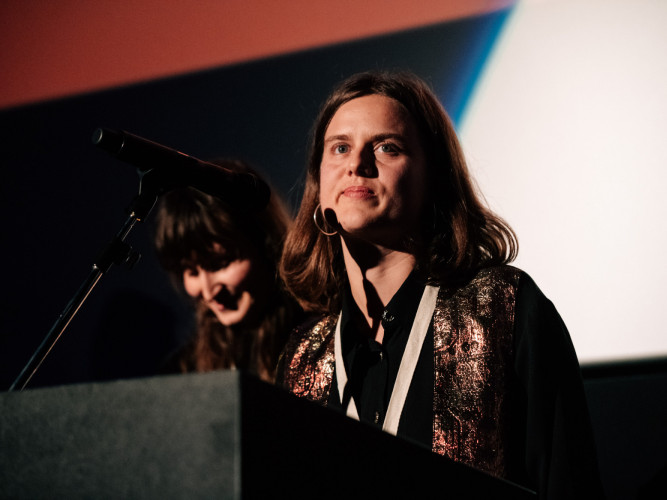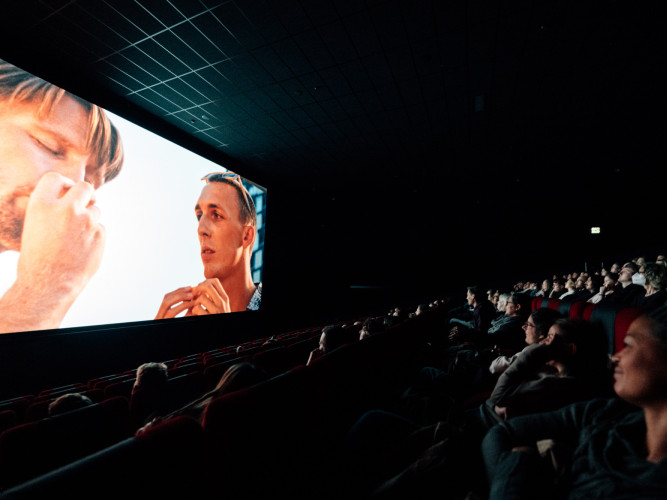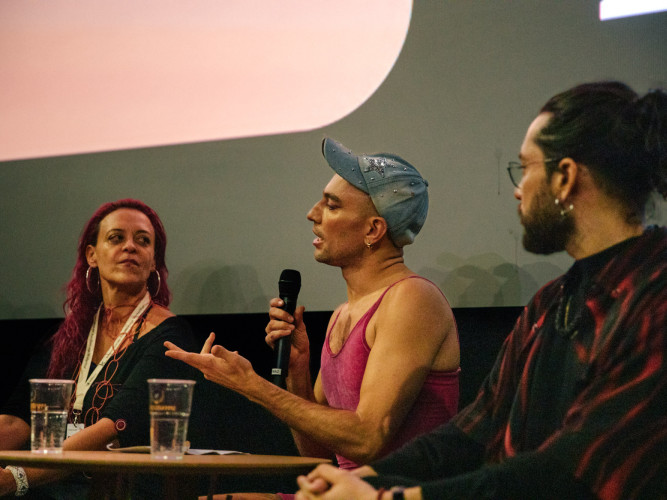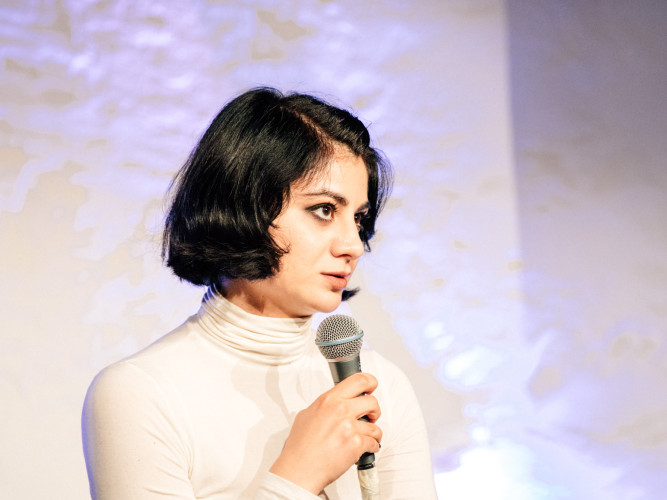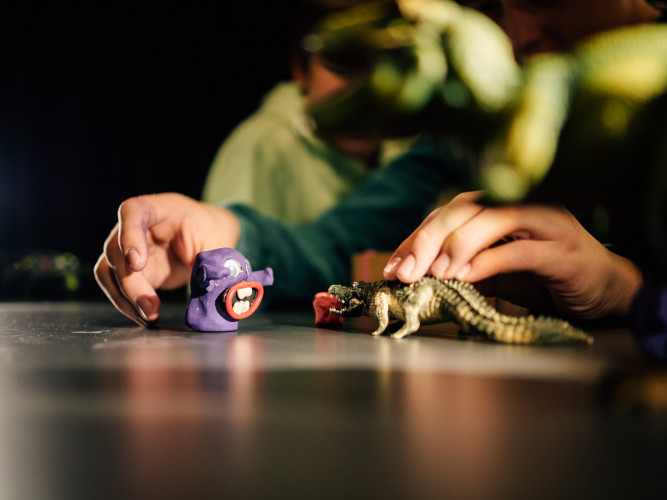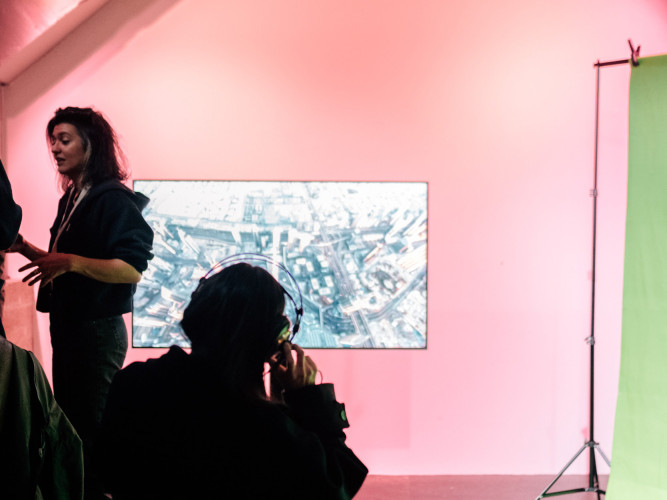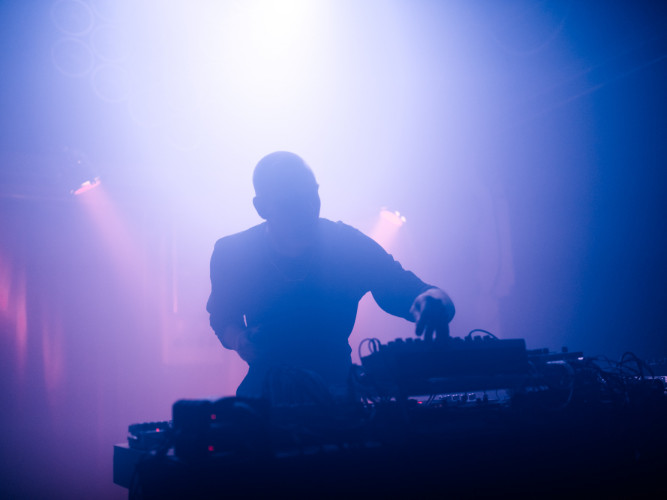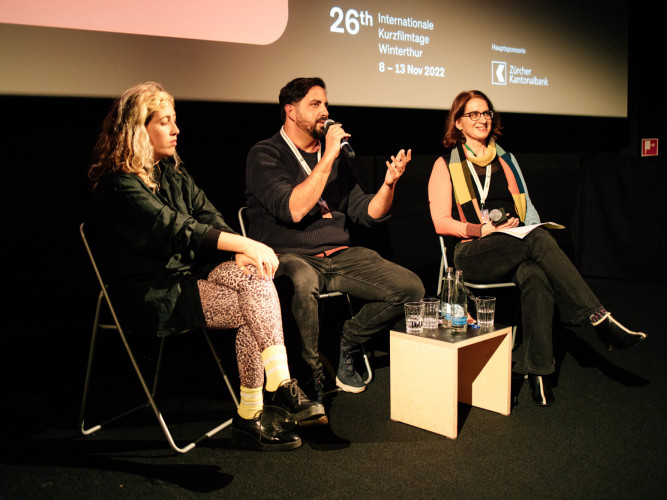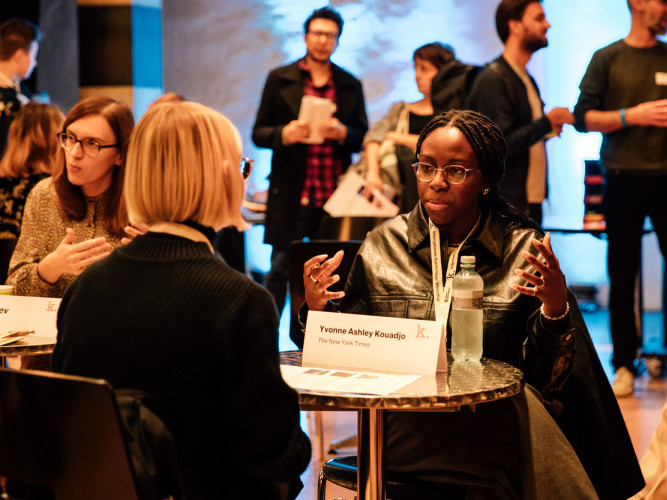For this year’s Main Focus: Beyond the Frame, Internationale Kurzfilmtage Winterthur has teamed up with the Oskar Reinhart Collection «Am Römerholz» to enable an unforgettable encounter between two prominent institutions from Winterthur’s cultural landscape.
The Main Focus explores the interplay between the disciplines of fine art and film. Works from the Oskar Reinhart Collection served as inspiration. The former mansion of art collector Oskar Reinhart (1885–1965) houses over 200 paintings, drawings, and sculptures of European art. The core of the collection consists of French Impressionist paintings and their immediate predecessors, supplemented by important examples of older art.
The period covered by the Oskar Reinhart Collection ends around the time when film emerges and spreads worldwide. Our aim is to break down the boundaries of the two disciplines and bring short film programmes into dialogue with artworks from the collection. The first phase of the project consisted of a lively exchange with the museum’s deputy director, Katja Baumhoff. We looked at some exemplary works to establish thematic clusters for our joint format. Examining the content and form of these exhibits, we mapped out artistic concepts from the visual arts and transferred them to the medium of film. Our main interest was not in tracking down transmedia counterparts or reassessing historic materials. Rather, we were surprised by the fact that these images dating back to the 15th century are full of contemporary themes, enriching our view of the present. Some of the connections we have identified are more associative, others more direct. We invite you to join and continue this dialogue with us. We also encourage you to view the artworks in person at the Oskar Reinhart Collection «Am Römerholz». Our hope is to inspire an exchange of ideas – not just at the festival but also in front of the originals.
Ten film programmes have emerged from this interdisciplinary collaboration; we have selected six of them to be screened at this year's Kurzfilmtage. These programmes can be considered cinematic interpretations, discussions, or complements to the artworks. They contain the blood, sweat, and tears of filmmakers, artists, curators, and film and art scholars.
In Landscapes of the Mind, the boundary between the mental world and the outside world is blurred – interiority becomes visible, finding expression in diverse cinematic forms. I Want to Break Free addresses power structures and imbalances: the films question, rebel, and give artistic expression to resistance. The shorts in Puzzle Me don’t tell conventional linear stories; instead, they meander, twist, and turn, containing little secrets to be deciphered. In Look at Me, cinematic portraits explore the self and how it is staged in front of the camera, playing the eternal game of representation and self-presentation. Ghosts of Objects experiments with cinematic motifs like life and death, movement and stillness, telling stories that point beyond themselves. And our selection in He’s Got the Look revolves around the objectification of men, offering glimpses – some serious, some tongue-in-cheek – behind the façade of toned bodies and six-packs.
Our Main Focus: Beyond the Frame is a visual journey across media, prompting reflection on the social value of art and promoting an understanding of cultural diversity and artistic expression. It also aims to spark a dialogue that reaches far beyond the timeframe of the works, addressing both historical and contemporary discourses.
Curated by John Canciani and Ivana Frigo
In the visual arts, portraits have always played an important role in the depiction and interpretation of people. They don’t just show the outward appearance of a person, but can also capture their personality, emotional state, social status, and cultural background.
Théodore Géricault’s
«Man with Delusions of Military Command» from the Oskar Reinhart Collection tells a tragic story without robbing the portrayed person of his dignity. At the same time, the painting breaks with the tradition of portraiture, which was intended to represent a person’s social status. The opposite happens here: the portrait captures the man’s identity loss, his withdrawal into a world of his own, where the self becomes an ephemeral and intangible entity.
Our cinematic portraits explore the self and its representation on the screen. The medium of film has numerous tools at its disposal for playing with aspects of representation and self-presentation. Light and colour are important factors that influence reception – just like in a painting. The variations and facets of human representation are endless, with self-presentation increasingly taking centre stage these days. The selected films offer multiple interpretations of each identity, several versions of a person’s self.
The word «portrait» comes from the Latin «protrahere», which means «to draw forth», «to bring out». This programme is about bringing out what lies hidden behind the façade and penetrating to some sort of «human essence». The cinematic frontal shot of a face inevitably creates intimacy. The camera’s gaze functions like an X-ray, exposing vulnerability – which can sometimes go too far and cause harm.
The experimental film «It Was Still Her Face» by Christoph Girardet uses a montage of film clips from Hollywood’s golden age to tell the eternal story of the adored yet absent woman. In «Kacey Mottet Klein, naissance d’un acteur», we witness the performance of a child actor who becomes a teenager in front of the camera. In «You Can’t Get What You Want But You Can Get Me», a series of photos and screenshots tells the story of Samira Elagoz and Z Walsh, two transmasculine artists who fall in love. In «From My Desert», a young investor in the depot of an unnamed airport goes into ecstasy over Cranach the Elder’s self-portrait, and not just because of the painting’s artistic value. In «Blue Boy», seven Romanian sex workers in Berlin are filmed head-on as they listen to recordings of their own experiences. «Sun Song» is a poetic journey from the darkness of early dawn into the brightness of the midday sun, portraying passengers on buses in Durham, North Carolina. In «Random White Dudes», members of the Mercury Prize-winning band Young Fathers ponder privilege and inequality in the style of a poetry slam, challenging the conventions of historical portraiture.
In these cinematic portraits, the camera plays an important role, sometimes crossing boundaries to capture people and their essence. While art has at times focused on the Other throughout history, the tendency has increased in recent years. Stories centre marginalized, disadvantaged, oppressed, and everyday people more frequently. On the one hand, this poses the danger of othering, on the other hand, it gives a voice to those who have long received little attention.
Curated by John Canciani and Ivana Frigo










